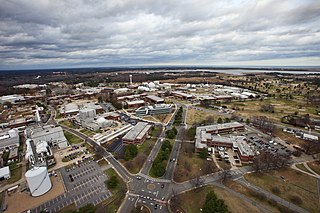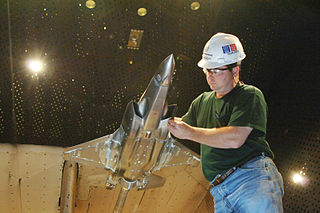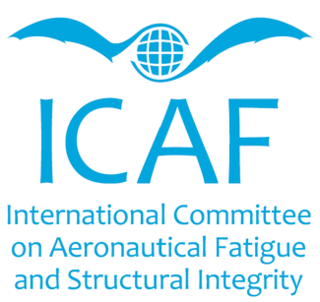History
The RSL, the predecessor of NLR, was officially founded on 5 April 1919, shortly after the First World War, however, Aeronautics had developed slowly in the Netherlands during the first two decades of this century when compared to the neighboring countries. After the Armistice, 11 November 1918, the aeronautical community started to concentrate on the application of the newly obtained skills and experience. The Government appointed a committee to review the possibilities of aerial applications. The year 1919 saw many new initiatives. On Saturday, April 5, 1919, the new Laboratory of the RSL was officially opened in the Navy Yard in Amsterdam. However, at this official opening, there was already a laboratory in operation.
In his opening speech, Prof. L.A. Van Royen emphasized that the RSL should develop free and open communications with the aeronautical world and in turn, the RSL should be assisted to come into contact with those who are interested in the activities of RSL. The RSL was originated at offices belonging to the Ministry of Defense, mainly as a result of the aviation activities of the Army (since 1913) and the Navy (since 1917). The groundwork for the foundation of RSL started during World War I in 1917, when civil aviation in the Netherlands was non-existent. On January 1, 1920, the RSL was transferred from the Ministry of Defense to the Ministry of Public Works, because, after the war, the defense spending was cut drastically and civil aviation appeared in the horizon. As early as 1922, the Minister of Public Works proposed to terminate RSL. The main argument was that the annual funding was considered extravagant. Fortunately nothing happened immediately and the dispute continued for many years. In 1918, when the RSL was planned, the location at the Navy Yard in Amsterdam was meant to be a temporary site only. Prof. Van Royen intended to establish a permanent laboratory in Delft, in close association with Delft University of Technology (TU Delft). However, flight testing had become an important part of the activities and several people felt that a location close to Schiphol and Fokker was more important than being close to TU Delft. The RSL continued to operate until it was converted in the independent Foundation NLL in 1937. The only major change in its formal task took place when a separate Department of Civil Aviation (RLD) was created to supervise airworthiness and aircraft operations in the Netherlands. However, this did not have much effect on the technical content of the work of the RSL; it was a separation of responsibilities.
The centerpiece of the laboratory was an Eiffel type wind tunnel. There were, however, complications with the construction of the Eiffel-type, though they were overcome by the time of the official opening of the building.
This tunnel was used extensively for a period of 20 years for a variety of aeronautical and non-aeronautical tests and, apart from smaller research facilities which were built at TU Delft, it was the only wind tunnel available for aeronautical development in the Netherlands until 1940. In the meantime, Wolff and Koning carried out studies for new wind tunnel facilities. As a result, two closed type wind tunnels were built in the new laboratory at Sloterweg in Amsterdam, that became fully operational in 1940. One was the LST 3 x 2 m2 which was large enough to simulate powered aircraft flight and a smaller tunnel, the LST 1.5 x 1.5 m2 for research purposes and non-aeronautical wind tunnel testing. They were the main low speed aerodynamics facilities for over 40 years until the DNW (the joint venture with the German sister organization DLR) became operational in 1980, followed by the LST 3 x 2.25 m2 of NLR, both in the Noordoostpolder.
During the Second World War, the total contract work-load of the laboratory hugely decreased, although it is important to note that the total personnel employed increased about 40%. [2] When the Allied Forces entered the Netherlands in September 1944, the situation shifted dramatically. The food and fuel supply, which was already nearly depleted, practically stopped. It took several months after the Liberation Day on May 5, 1945, for the normal operations of the laboratory to resume. Although the laboratory did not incur physical damage during the war, it had fallen into disrepair. On top of that, until 1952 there was an unfavorable political opinion of NLL, especially in terms of financial support for the expansion plans of the NLL that included a HST, among other facilities.
The year 1950 marked the beginning of international co-operation and cross utilization of facilities between NLL and ONERA. On February 23, 1955, a contract between AICMA-CIPS and NLL was signed, stipulating that NLL would make available the HST to members of AICMA for up to 50% of the available testing time. Later, in 1976, a two-nation aeronautical test facility, the DNW of Germany and the Netherlands, became a reality. In 1988, a four-nation (France, Germany, the UK and the Netherlands) aeronautical test facility, the ETW, was opened. In 1957, after a period of deliberations and negotiations, an area of 2 square kilometers was purchased in the Noordoostpolder (NOP), and in 1958, the first NLR employees started working there. Since then there has been a gradual shift of activities from Amsterdam to the NOP.
On April 5, 2019, the Netherlands Aerospace Center celebrated their 100th anniversary. It is on this day that they received the honorary title 'Royal'. [3]
Facilities
NLR has a laboratory airplane, a Cessna Citation II (PH-LAB), it is shared with Delft University of Technology (TU Delft).
NLR has developed different flight simulators for research on aircraft and helicopters.
NLR conducts research on future concepts in Air Traffic Management (ATM) and Air Traffic Control (ATC) using its advanced proprietary simulation platform, the NLR ATC Research Simulator (NARSIM). NARSIM consists of two physical manifestations, one for en-route ATC (NARSIM-Radar) and one for airport tower controllers (NARSIM-Tower) with a 360-degrees field-of-view visual system. NARSIM is also used for performance of technology verification and validation activities as well as air traffic controller training.
NLR has installations in which airplane constructions on full scale, components and test samples can be tested. Equipment and software for development of construction of parts for airplanes and space vehicles are also available. For development and construction of composites a special laboratory has been arranged. Moreover, the NLR has instrumentation for flight tests, and several specialized apparatus for development of avionics. Facilities for testing antenna and conduction of so-called environmental tests are used to test several equipment. In the micromechanics workplace the NLR develops models and instruments for wind tunnel tests. The computer network of the NLR contains a supercomputer for the implementation of extensive aerodynamic and structural calculations.












